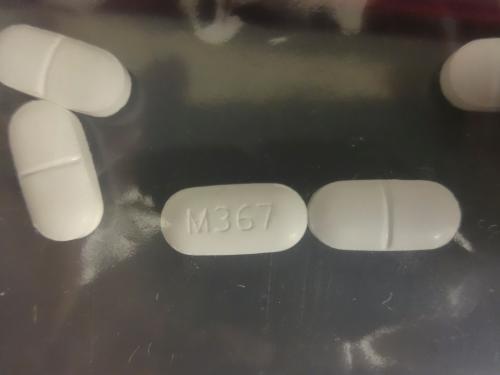This paper comes from the paper series “The opioid crisis in America: Domestic and international dimensions.”
As the United States—and the world—reel from the COVID-19 pandemic, the epidemic of opioid use disorder continues to ravage the country. It too has cost the lives of hundreds of thousands of Americans, devastated families and local communities, and exposed critical weaknesses in U.S. drug policy as well as in the health and welfare systems available to our low-income population.1 Like COVID-19, the opioid crisis also has multiple and complex international dimensions. Moreover, the two blights have become intertwined, with COVID-19 likely exacerbating the opioid epidemic.2
Since 2000, there have been 400,000 opioid-involved deaths in the U.S, contributing to an historic decline in U.S. life expectancy.3 Overdose death data only capture part of the epidemic’s damage. Millions of people are having their lives and the lives of their families severely damaged by substance dependence. Opioid use disorder (OUD) puts them at higher risk for various infectious diseases, depression, and suicide.4 Without adequate treatment, and in some cases even despite receiving treatment, it undermines their capacity to engage in productive economic activity and maintain good family relations, while substance dependence- related behaviors can subject them to criminal prosecution and imprisonment. In 2018, self-reports to a household survey generated an estimate of 2.35 million Americans suffering from OUD,5 and for many reasons that is likely a substantial underestimate.6 The opioid epidemic also generates vast national economic and social costs. The U.S. Council of Economic Advisors put the cost at roughly $700 billion, 3.4% of GDP, in 2018.7
To provide policy options and recommendations for addressing multiple dimensions of the opioid epidemic, the Brookings Institution has brought together some of the United States’ leading experts on drug policy. For over a year, Brookings and external experts undertook a multidisciplinary collaboration to develop new insights and best practices for policy stakeholders at the local, state, and federal levels, as well as for members of the public who are on the front lines of the opioid crisis.
This Brookings opioid project, “The Opioid Crisis in America: Domestic and International Dimensions,” has analyzed policy options for reducing demand, providing treatment, designing regulatory frameworks, and implementing domestic law enforcement and international supply control measures. It has explored local impacts on communities as well as state and federal level responses and international actions. It has paid special attention to vulnerable communities, such as politically and economically disenfranchised Americans, women and children, and military veterans.
Before the project’s findings are introduced, a brief review of how the opioid epidemic has unfolded in the United States and around the world is in order.
-
Footnotes
- See Carol Graham and Benjamin Miller, “Protecting Our Economy and Health in a Pandemic,” RealClearPolitics, May 17, 2020.
- Aliese Alter and Christopher Yeager, “The Consequences of COVID-19 on the Overdose Epidemic: Overdoes are Increasing,” Overdose Detection Mapping Application Program, May 13, 2020.
- Steven H. Woolf and Heidi Schoomaker, “Life Expectancy and Mortality Rates in the United States, 1959-2017,” JAMA 322, no. 20 (November 26, 2019): 1996-2016.
-
Yih-Ing Hser, Andrew J. Saxon, Larissa J. Mooney, Karen Miotto, Yuhui Zhu, Caroline K. Yoo, Di Liang, David Huang, and Douglas S. Bell, “Escalating Opioid Dose Is Associated with Mortality: A Comparison of Patients With and Without Opioid Use Disorder,” Journal of Addiction Medicine 13, no. 1 (January/February 2019): 41-46; Yih-Ing Hser, Larissa J. Mooney, Andrew J. Saxon, Karen Miotto,
Douglas S. Bell, Yuhui Zhu, Di Liang, and David Huang, “High Mortality Among Patients With Opioid Use Disorder in a Large Healthcare System,” Journal of Addiction Medicine 11, no. 4 (July/August 2017): 315-319. - “Key Substance Use and Mental Health Indicators in the United States: Results from the 2018 National Survey on Drug Use and Health,” (Rockville, MD: Substance Abuse and Mental Health Services Association, August 2019), .
- Jonathan P. Caulkins, Beau Kilmer, Peter H. Reuter, and Greg Midgette, “Cocaine’s fall and marijuana’s rise: questions and insights based on new estimates of consumption and expenditures in US drug markets,” Addiction 110, no. 5 (May 2015): 728-736.
-
“The Full Cost of the Opioid Crisis: $2.5 Trillion Over Four Years,” The White House, October 28,
2019.
Douglas S. Bell, Yuhui Zhu, Di Liang, and David Huang, “High Mortality Among Patients With Opioid Use Disorder in a Large Healthcare System,” Journal of Addiction Medicine 11, no. 4 (July/August 2017): 315-319.
2019.
The Brookings Institution is committed to quality, independence, and impact.
We are supported by a diverse array of funders. In line with our values and policies, each Brookings publication represents the sole views of its author(s).















